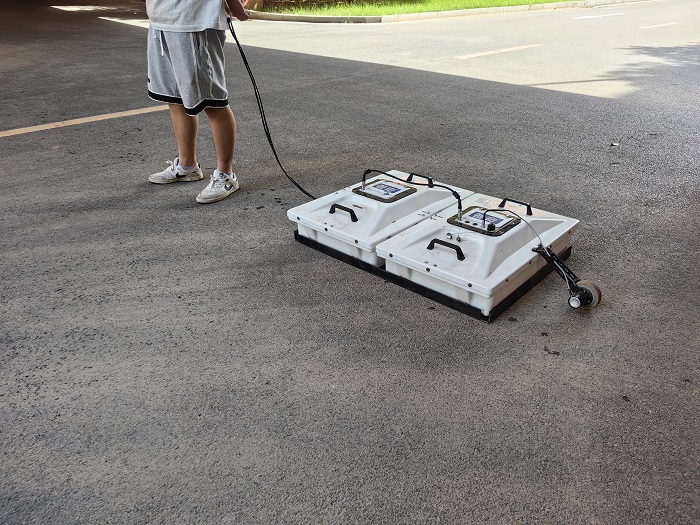In the journey of exploring the unknown world, mankind has never stopped the curiosity and pursuit of underground mysteries. With the rapid development of science and technology, an advanced geophysical technology called Ground Penetrating Radar (GPR) has come into being, which, like a precise key, opens the door to the depths of the underground for us and reveals the secrets hidden under the surface.

Ground Penetrating Radar (GPR): Technical Principles and Nomenclature
Ground Penetrating Radar (GPR), a term that covers a wide range of appellations such as Ground Penetrating Radar (GPR), Underground Radar (UPR), Geo-Radar (GPR), Pulse Radar (PR), Pipeline Detection Radar (PDR), Ground Penetrating Radar (GPR), and so on, all of which point to a state-of-the-art method of using high-frequency electromagnetic waves for underground detection. The core principle is to transmit high-frequency electromagnetic waves through the antenna, these electromagnetic waves propagate in the underground medium will encounter different material interfaces, reflection, refraction or absorption, and then by the receiving antenna to capture the return of these electromagnetic wave signals. Through the analysis of these signals waveforms, amplitude strength and time change characteristics, scientists can deduce the spatial location of the underground medium, structure, morphology and depth of burial, providing valuable information for the exploration of the underground world.
The unique advantages of ground-penetrating radar
Compared with traditional underground exploration methods, ground-penetrating radar shows many significant advantages. First of all, its detection speed is very fast, can cover a large area in a short time, greatly improving the work efficiency. Secondly, the detection process is continuous and uninterrupted, which can fully record the subtle changes in the underground medium and avoid the risk of missing important information. Furthermore, ground-penetrating radar has a very high resolution, which can accurately depict the shape and boundary of underground objects, providing the possibility of fine detection. In addition, the technology is easy and flexible to operate, with relatively low requirements for operators and relatively low detection costs, making it widely used in many fields.
Widely used fields
Ground Penetrating Radar (GPR) plays an important role in many fields due to its high precision, high efficiency and non-destructive detection. In the field of archaeology, it helps archaeologists to reveal the distribution and structure of ancient relics, providing valuable information for historical research; in mineral exploration, ground-penetrating radar can accurately detect the location and scale of the ore body, providing a scientific basis for the development of mineral resources; in the geological survey of disasters, it has become an important tool to monitor geologic hazards and assess the stability of the geology; in the geotechnical engineering survey and engineering quality inspection, ground-penetrating radar can promptly detect the location and scale of the ore body, providing a scientific basis for the development of mineral resources. In geotechnical engineering survey and engineering quality inspection, ground-penetrating radar is able to discover and evaluate underground cavities, cracks and other hidden dangers in a timely manner to ensure engineering safety; in addition, in the field of building structure inspection and military target detection, ground-penetrating radar has also shown its unique value.
Ground Penetrating Radar (GPR), as one of the important achievements of modern geophysical exploration technology, is changing the way we recognize the underground world with its unique advantages. With the continuous progress of technology and the expansion of application fields, we have reason to believe that ground-penetrating radar will play an even more important role in the future, contributing more power to the cause of human underground exploration.








